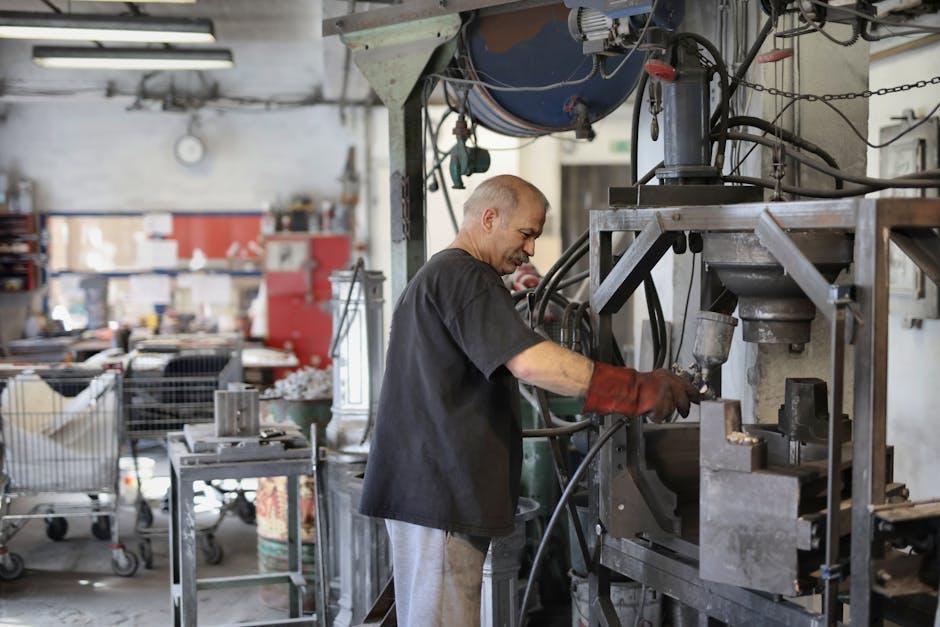In our ever-evolving world, the concept of multigenerational living has regained popularity as families seek to create harmonious spaces that cater to the diverse needs of each generation. From accommodating elders who require accessibility and comfort, to providing spaces for young children to play and grow, designing for multigenerational living poses unique challenges and opportunities. Join us as we explore the nuances of creating spaces that foster connection and inclusivity for every generation.
– Creating Functional Spaces for All Ages
When it comes to multigenerational living, creating functional spaces that cater to the needs of every generation is essential. From young children to elderly family members, each age group has specific requirements that need to be taken into consideration in the design process.
**Design Considerations for Multigenerational Living Spaces:**
– **Accessibility:** Ensuring that spaces are easily accessible for individuals of all ages and abilities.
- **Safety:** Implementing safety features such as grab bars, non-slip flooring, and well-lit pathways.
– **Flexibility:** Designing spaces that can be easily adapted to accommodate changing needs and preferences.
– **Comfort:** Creating comfortable and inviting spaces that cater to the unique preferences of each generation.

– Incorporating Universal Design Principles in Multigenerational Homes
In multigenerational homes, it is crucial to incorporate universal design principles to ensure that every generation can live comfortably and independently. By designing spaces that are accessible to people of all ages and abilities, you can create a home that is welcoming and functional for everyone. Whether you have aging parents, young children, or family members with disabilities, implementing universal design features can make daily life easier and more enjoyable for all.
Some key elements to consider when incorporating universal design principles in multigenerational homes include:
- Wide doorways and hallways to accommodate wheelchairs and strollers
- Non-slip flooring to prevent falls for older adults and young children
- Adjustable countertops and cabinets to accommodate individuals of different heights

– Balancing Privacy and Togetherness in Shared Living Spaces
When it comes to designing shared living spaces for multigenerational families, finding a balance between privacy and togetherness is crucial. Each generation has its own unique needs and preferences, making it important to create a space that caters to everyone. Here are some creative ways to achieve harmony in multigenerational living:
- Flexible Layouts: Design the space in a way that allows for flexibility and adaptability. This could include movable furniture, sliding doors, and multipurpose rooms that can be easily reconfigured to suit different activities or privacy needs.
- Zoning: Divide the living space into zones that cater to different generations. For example, create a quiet area for older adults to relax and read, a play area for children to have fun, and a communal space for the whole family to come together.
- Personal Retreats: Consider incorporating private retreats within the shared space, such as individual bedrooms or designated quiet corners where each family member can escape for some personal time.
| Generation | Design Solution |
| Grandparents | Comfortable seating areas for relaxation |
| Parents | Work-from-home spaces for productivity |
| Children | Playful and interactive areas for creativity |

– Intergenerational Living: Fostering Connections Through Thoughtful Design
When it comes to creating spaces that cater to people of all ages, thoughtful design is key. Multigenerational living is a growing trend that emphasizes the importance of fostering connections between different age groups within a household. By designing spaces that are accessible and accommodating to individuals of varying abilities and ages, families can create a harmonious living environment that promotes interaction and unity. Intergenerational living encourages shared experiences, mutual support, and a sense of belonging for everyone involved.
One way to promote intergenerational connections through design is by incorporating flexible and adaptable spaces that can be used for a variety of activities. Whether it’s a common area for family gatherings, a quiet nook for reading and relaxation, or a play area for children, versatile spaces help accommodate the diverse needs and interests of each generation. Additionally, incorporating elements such as wide hallways, grab bars in bathrooms, and non-slip flooring can enhance the safety and accessibility of the home for older family members. By prioritizing inclusivity and functionality in design, multigenerational households can create a welcoming and supportive environment for everyone to thrive.
In conclusion, creating multigenerational living spaces that cater to the needs and preferences of every generation can be a challenging yet rewarding endeavor. By incorporating thoughtful design elements that promote independence, accessibility, and communal interaction, families can cultivate a harmonious living environment that fosters connection and understanding across all ages. So whether you’re planning a new build or renovating an existing home, remember that with a little creativity and flexibility, you can create a space that truly accommodates everyone. Here’s to designing homes that bring generations together in harmony.


